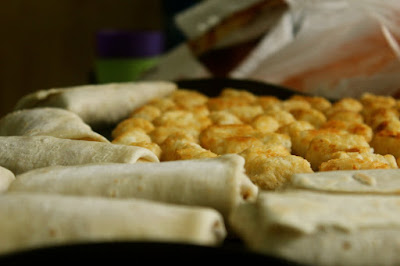Representing multiple areas of the coffee industry, from producers and exporters to importers and marketers; women from around the world gather in El Salvador for the second Annual International Women’s Coffee Alliance, International Convention, from October 25-27.
On Wednesday, 30 of those women journeyed to Sierra Apaneca-Ilamatepec, to explore Finca, Beneficio, and Tostaduria El Manzano, observing the farm, milling, and roasting levels of coffee production.
As stated in their website, the objectives of the convention are threefold, “to increase the visibility of the organization, share knowledge of coffee from seeds to the cup, and promote relations in the coffee sector.” In conjunction and support for their theme, Emilio Lopez, wife Christy, and mother, Margarita Diaz de Lopez, each having experience in the different levels of coffee production, from growing to marketing, welcomed the group.
The day began late morning, in the garden area of the plantation, enjoying El Manzano coffee and pan dulce. From there, the tour began, following the path of coffee from seed to cup, as Emilio led the group through the construction zone of what will become a new patio at El Manzano, allowing visitors to pause for photos of the bright coffee cherries, blushing from the trees planted in route to their first station, the weighing and categorization station, where cherries are weighed and graded for processing.
They then observed the de-pulping station, where cherries are washed and separated by the mechanical syphon, into two qualities of cherries called sinkers and floaters, before passing through an unripe bean separator, where unripe cherries are rejected, and cycled back into the batch of second quality cherries; at which point, both qualities will be de-pulped by vertical machines, and filtered by horizontal rotary screens, which allow normal beans to pass through, while rejecting any beans that did not get de-pulped, is round, or otherwise does not have a flat surface, ultimately resulting in four qualities of parchment coffee; which are washed of their mucilage in water, and channeled into hoppers, and carts, to be spread out onto the patios for drying.
The women were able to walk the patios, as some asked questions, while others kneeled to hold and smell the coffees, taking photos of and with the coffee, or of the small placards marking each batch of coffee processed, listing its complete information, from batch number, to farm and quality. Completing the drying portion of the processing level, were the two horizontal dryers, which the group visited, staring up the long bucket elevators, and into the two furnaces that, fueled by husk, heat the dryers, before pausing for a group picture in front of the patio.
From there the tour entered the hulling portion of processing, as the group walked through the warehouses, already partially filled with parchment coffee from this years harvest, bagged and compiled according to elevation and certification, ready to pass through the hulling equipment, which removes parchment from the green coffee, and separates it with screens according to size, including a newly installed screen for peaberries; at which point the coffee will be ready for export and roasting.
Before the final stop on the tour, the group paused for stories of historic Santa Ana, of weeks journeying, and wagon trains out to the plantation, while imagining what farm life would have been like from 1870 to 1950, before modern roads and efficient transportation. For this reason, a chapel was built to host mass for family and workers throughout their stay at the plantation during harvest, the altar from which however, having now been removed, and replaced with a black, steel, Diedrich IR-12 roaster.
The Roastery at El Manzano is where roughly 10 percent of all the green coffee, processed at Beneficio El Manzano, will end up, where just over half of that 10 percent will be roasted for commercial clients within El Salvador, (i.e. Pollo Campero and McDonalds). The rest will be roasted for speciality customers, distributed to various outlets, (Super Selectos), also within El Salvador.
As the tour came to an end, the group rejoined others in the garden, for lunch and conversation, all accompanied by more coffee and pan dulce, from a famous shop in Santa Ana, bringing an end to an odyssey that began many months ago, as trees shed their flowers and absorbed the seasonal rains and filtered sun, to produce the harvest that brought these women together, now experienced, shared, and enjoyed at every step along the way.























































